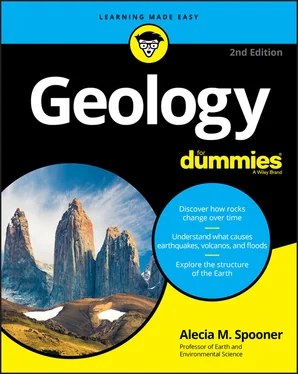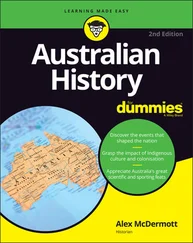1 ...8 9 10 12 13 14 ...19 A scientific theory explains how a set of observations are related. For example, the theory of gravity seeks to explain how the relationship of two objects (their relative size, weight, and distance from each other) results in the observed interaction described by the law of gravity.Both a scientific law and a scientific theory could be accurately described as “fact.” Both are developed out of hypotheses that have been tested and proved true. A well-tested and generally accepted theory is considered true even though it may still be tested by the proposal of new hypotheses and experimentation. In some cases, part of a theory may be shown to be untrue, in which case the theory will be adjusted to accommodate this new truth without the entire theory being called into question.
A really thorough, well-tested, and widely accepted theory may become the current scientific paradigm. Scientific paradigms are patterns that serve as models for further research. Right now, plate tectonics theory is the paradigm within which all new geologic research takes place. The explanation provided by plate tectonics theory is accepted as proven true, and most researchers seek to answer questions that refine their understanding of this process rather than seeking to disprove the theory as a whole.
Paradigms, like theories, may change with new information; the change is called a paradigm shift. A paradigm shift brings a new perspective — a whole new way of looking at things. For example, the acceptance of the ancient age of the earth was a paradigm shift for early geologists. These scientists had struggled to explain how geologic features were created in the short span of a few thousand years (previously accepted as the age of the earth). The new paradigm of Earth being billions of years old provided a framework within which geologic processes had plenty of time to occur, creating the features they observed. (See Chapter 3for more discussion about this particular paradigm shift.)
Speaking in Tongues: Why Geologists Seem to Speak a Separate Language
As with many sciences, when you begin to study geology you may find yourself overwhelmed by all the new words that you have to learn. Indeed, geologists have their own language for describing rocks, earth processes, and geologic features. But after you get the hang of what all the different words indicate, reading about geology is much less intimidating.
Lamination vs. foliation: Similar outcomes from different processes
Geologists describe characteristics of rocks with the intention of understanding the processes that formed those characteristics. For this reason, an observed characteristic, such as “layers,” will have different terms indicating what kind of process resulted in those layers. Here’s an example of what I mean:
A rock with layers may be described as laminated. Laminations are thin layers formed by the accumulation of tiny particles that settle through standing water (such as at the bottom of a lake or pond). This layered (laminated) rock is a sedimentary rock.
A rock with layers may also be described as foliated. Foliations are thin layers or sheets of minerals that are created by intense amounts of pressure and heat deep within the earth’s crust. This layered (foliated) rock is a metamorphic rock.
 The layered characteristic of these rocks may seem similar at first glance but is actually the result of very different processes that occur under very different conditions on the earth. Closer inspection of the rocks (perhaps with a microscope) will reveal that the layers made of particles are different in appearance than the layers made of mineral sheets.
The layered characteristic of these rocks may seem similar at first glance but is actually the result of very different processes that occur under very different conditions on the earth. Closer inspection of the rocks (perhaps with a microscope) will reveal that the layers made of particles are different in appearance than the layers made of mineral sheets.
Gabbro vs. basalt: Different outcomes from similar processes
Another defining characteristic of rocks is their composition, or what minerals they are made of. However, rocks with the same mineral composition may have different names. Why? Geologists want to categorize rocks according to both composition and formation process. An example is the distinction between the rocks called gabbro and basalt.
Both gabbro and basalt are dark-colored rocks with the same mineral composition. They both are formed by the cooling of liquid rock (magma or lava) into a solid. Gabbro is formed when the liquid rock cools underground, slowly, over a long period of time. Basalt is formed when liquid rock cools very quickly, at or near the surface of the earth where it is exposed to air or water.
The different formation processes create observable differences in the rocks — gabbro has large, visible mineral crystals, while basalt does not — but the composition of the rocks is still the same. By giving them different names, geologists can categorize a rock with a term that includes information about both composition and formation characteristics.
 When studying geology it is very helpful to have a dictionary of geologic terms or dictionary of earth science handy to help tackle the immense amount of new vocabulary that you will encounter!
When studying geology it is very helpful to have a dictionary of geologic terms or dictionary of earth science handy to help tackle the immense amount of new vocabulary that you will encounter!
Chapter 3
From Here to Eternity: The Past, Present, and Future of Geologic Thought
IN THIS CHAPTER
 Using catastrophe to explain geologic phenomena
Using catastrophe to explain geologic phenomena
 Proposing origins for Earth’s rocks
Proposing origins for Earth’s rocks
 Arriving at modern ideas about the earth
Arriving at modern ideas about the earth
 Using today’s processes to understand the past
Using today’s processes to understand the past
 Unifying theories with plate tectonics
Unifying theories with plate tectonics
 Continuing to ask questions
Continuing to ask questions
For many sciences, the foundations of modern thought were laid during Europe’s Scientific Revolution of the sixteenth and seventeenth centuries. During this time great thinkers began to redefine how they examined and understood the world around them. Although important advances were made in astronomy, mathematics, anatomy, and other sciences during this time, advancement of geologic science was constrained by a widely held belief that the Bible described an accurate age of the earth at only a few thousand years.
As a result, the road to modern geologic theories did not begin to be paved until later in the eighteenth and nineteenth centuries. In fact, significant insights into the earth’s systems are still occurring today. In this chapter, I describe the important theories presented along the way to our current understanding of the earth and its systems. I also describe the sequence of important hypotheses that led to a unifying theory of the earth (called plate tectonics theory), as well as some of the exciting areas of current geologic research.
Читать дальше

 The layered characteristic of these rocks may seem similar at first glance but is actually the result of very different processes that occur under very different conditions on the earth. Closer inspection of the rocks (perhaps with a microscope) will reveal that the layers made of particles are different in appearance than the layers made of mineral sheets.
The layered characteristic of these rocks may seem similar at first glance but is actually the result of very different processes that occur under very different conditions on the earth. Closer inspection of the rocks (perhaps with a microscope) will reveal that the layers made of particles are different in appearance than the layers made of mineral sheets. When studying geology it is very helpful to have a dictionary of geologic terms or dictionary of earth science handy to help tackle the immense amount of new vocabulary that you will encounter!
When studying geology it is very helpful to have a dictionary of geologic terms or dictionary of earth science handy to help tackle the immense amount of new vocabulary that you will encounter! Using catastrophe to explain geologic phenomena
Using catastrophe to explain geologic phenomena










